Here in Israel we have many Jews of Ethiopian background, commonly known as Beta Israel. One of the foods this community eats for special occasions, including Shabbat, is called dabo. So I wanted to make it for the next installment of Cooking Jewish Culture.
I had actually planned this post a long time ago, but my first attempt at baking the bread was a partial failure. Failure because the dough was too wet (more on that later) and the bread, therefore, collapsed and was completely not presentable. Partial failure only, because I still ate what came out of the oven and it was delicious enough to tell me I was on the right track!
So let’s look a bit more closely at this special Ethiopian bread.
Is Dabo a Jewish Food?
Dabo is actually eaten by many Ethiopians, not just Jews from that country. So why do I consider it a candidate for “Cooking Jewish Culture?” For starters, the fact that Ethiopian Jews choose to eat this bread specifically for Shabbat gives it an extra significance to them. The daily bread in Ethiopia is injera, a spongelike bread that combines the functions of serving platter and eating utensil. It is made from teff, an ancient and tiny grain that is native to the Horn of Africa, where Ethiopia is situated. Dabo, in contrast, is baked in a more standard loaf shape, and is made from the rarer (for Ethiopia) wheat flour. Like Jews everywhere, Beta Israel members reserved their best food for their Sabbath meals, and thus dabo became the bread of choice. I’d like to think that wheat’s mention as one of the Seven Species indigenous to the land of Israel might also have played a role in raising dabo to a higher spiritual level for the Shabbat meal.
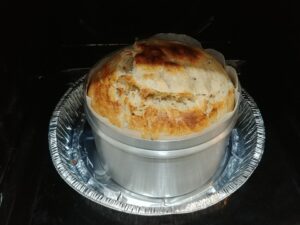
Challenges
Dabo looked so appealing when I began exploring Ethiopian Jewish food, so I knew I wanted to try to make it. I started poking around for recipes, and asked one woman who works in a store in Machane Yehuda Market that sells Ethiopian dry goods. She gave me her advice and also some recipes she had on laminated cards, plus I bought a Hebrew-language Ethiopian cookbook from her. The problems I encountered were two-fold.
First, there is no standard recipe. Each recipe I found was very different, with disparate proportions, types of flour and seasonings. Techniques were more or less the same, though not identical. I went through about six or seven recipes, and tried to come up with one that was fairly standard based on proportions in all of them, etc.
Clearly the variations stem from the fact that this is a folk recipe, passed down from generation to generation. Each family will do things slightly differently. The other result of trying to bake from a folk recipe gave me my second challenge. It required a degree of guessing to get the amount of water, and thus the consistency of the dough right. I knew it was supposed to be wet and sticky, but that’s all I knew.
The first time I attempted to make dabo, however, I was way off. So when I took the bread out of the pot it baked in, the bulk of the dough was not yet baked enough, and the loaf collapsed. I was able to salvage something edible by returning the doughy mush to the oven, but it was certainly not a “proper” dabo.
This time around it seems to have worked a lot better. I think it looks beautiful, but more than that, I uploaded a picture to a Hebrew Facebook group dedicated to traditional Ethiopian Jewish cooking. The tremendously positive responses I got completely overwhelmed me. So at the very least, it looked right to those who know! When I tasted it this past Shabbat, I can say I really enjoyed it, and I think my guests did as well.
Bottom line, give this recipe a try! But since it is such a flexible, folk recipe, I’d encourage you to tweak it if you don’t love it the first time.
Please note, by the way, that this makes a very large loaf. You can definitely make a smaller one if need be. But part of honoring the Shabbat is also making a bread that is equally impressive and delicious!
Dabo
Equipment
- Round, lidded aluminum pot (In Israel, this is sold as a kubana pot. See notes at end.)
Ingredients
- 1 kg flour (See notes at end.)
- 1 Tbsp yeast
- 1 tsp salt
- 2 Tbsp sugar
- 2 tsp nigella seeds
- ½ tsp ground coriander
- ½ tsp ground fenugreek
- 2 Tbsp oil
- 3 cups water approximately (See notes at end.)
Instructions
- Put all dry ingredients into a large mixing bowl. Add oil.
- Begin adding the water. Start with about 1½ cups and begin to mix thoroughly, using your hands. Gradually, as the ingredients mix and the dough gets wetter, add more water a little bit at a time. You may use the water to help get the dough unstuck from your hands. You are aiming for a consistency of dough that is wet and sticky, but not overly goopy. As you near the proper consistency, add small amounts of extra flour or water as needed. Work the dough inside the bowl for a few minutes.
- Cover the bowl and leave the dough to rest and rise. It should take around 45 minutes until the dough approximately doubles in size.
- Uncover the bowl and deflate the dough, pushing it down and remixing it by hand. Then recover the bowl and let it rise a second time, again until it approximately doubles in size.
- Preheat the oven to 200° C / 390° F. Put baking paper around the inside walls of a round aluminum pot. You may secure the paper with clothespins. Prepare a circle of baking paper that is the size of the inside of the pot.
- Gather the dough into a ball and place inside the pot. Remove the clothespins. Wet your hands slightly, and push down the top of the dough. Place the circle of baking paper gently on top, and loosely cover the pot with the lid.
- Put the pot in the oven, on top of aluminum foil or baking tray to prevent any potential messes. After 5 minutes, raise the temperature to 218° C / 425° F.
- The bread should rise above the top of the pot, pushing up the loose lid. After approximately 35-40 minutes it should have risen sufficiently, and will look nearly done. Remove the lid and circle of baking paper from the pot and bake for an additional 5 minutes.
- After removing the bread from the oven, let it cool for a few minutes and then carefully remove it from the pot.
Video
Notes
- The pot I used is 18 cm diameter by 11 cm high.
- I used 80% whole wheat flour, but you can use any flour you like. It just might require more or less water to achieve the proper consistency. (You can see the desired consistency in the accompanying video.)
- I started with about 1 1/2 cups of water, and then gradually added more, mixing as I went. At a certain point, I felt it had gotten too wet, so I then added in a drop more water.
Won’t You Show Me Some Love and Share This Post?
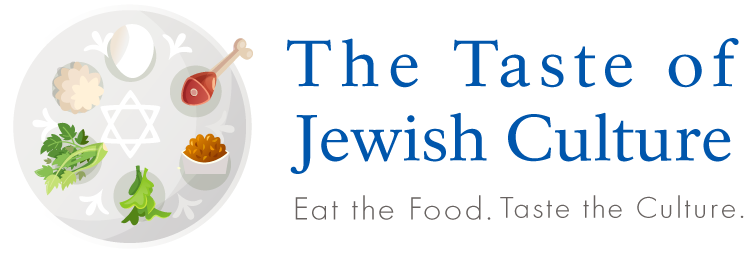
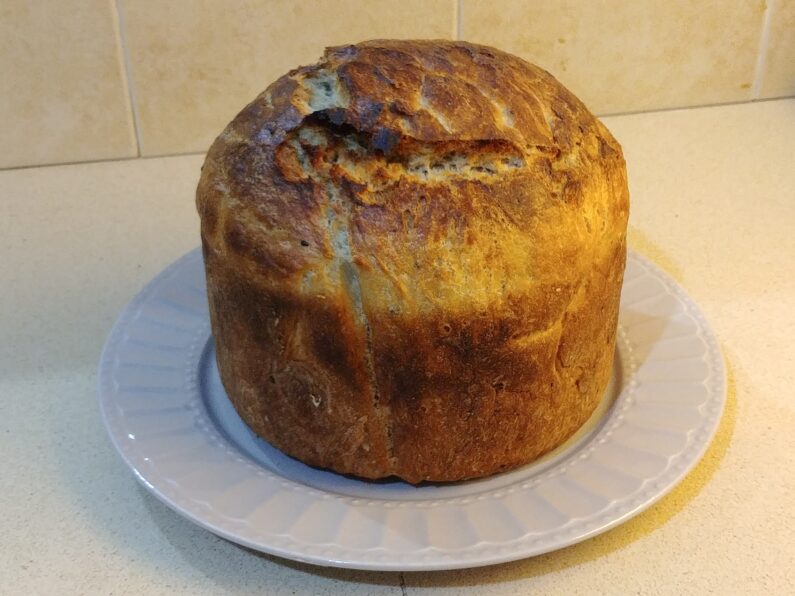
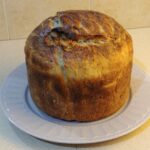
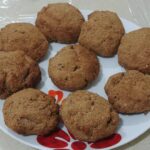
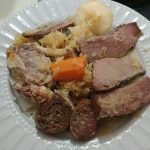


Mona
Not able to eat coriander. Is there a substitute or if it’s omitted, how does that change the flavor of the bread.
Cooking Jewish Culture: Dabo - Bukharian Digital Magazine
[…] the recipe for this bread: https://www.tasteofjew.com/cooking-jewish-culture-dabo/ […]
Episode 7 - Gondi: A Persian Pleasure to Honor Shabbat
[…] Dabo […]